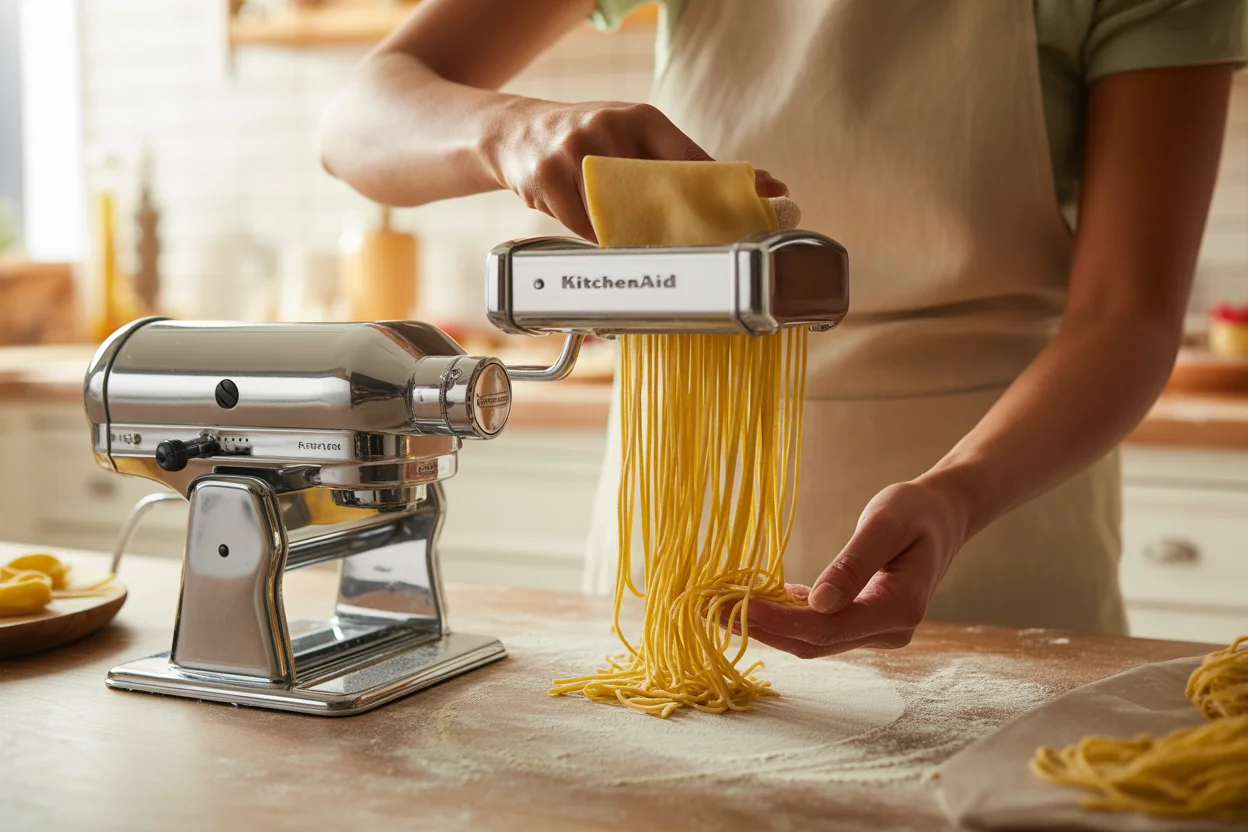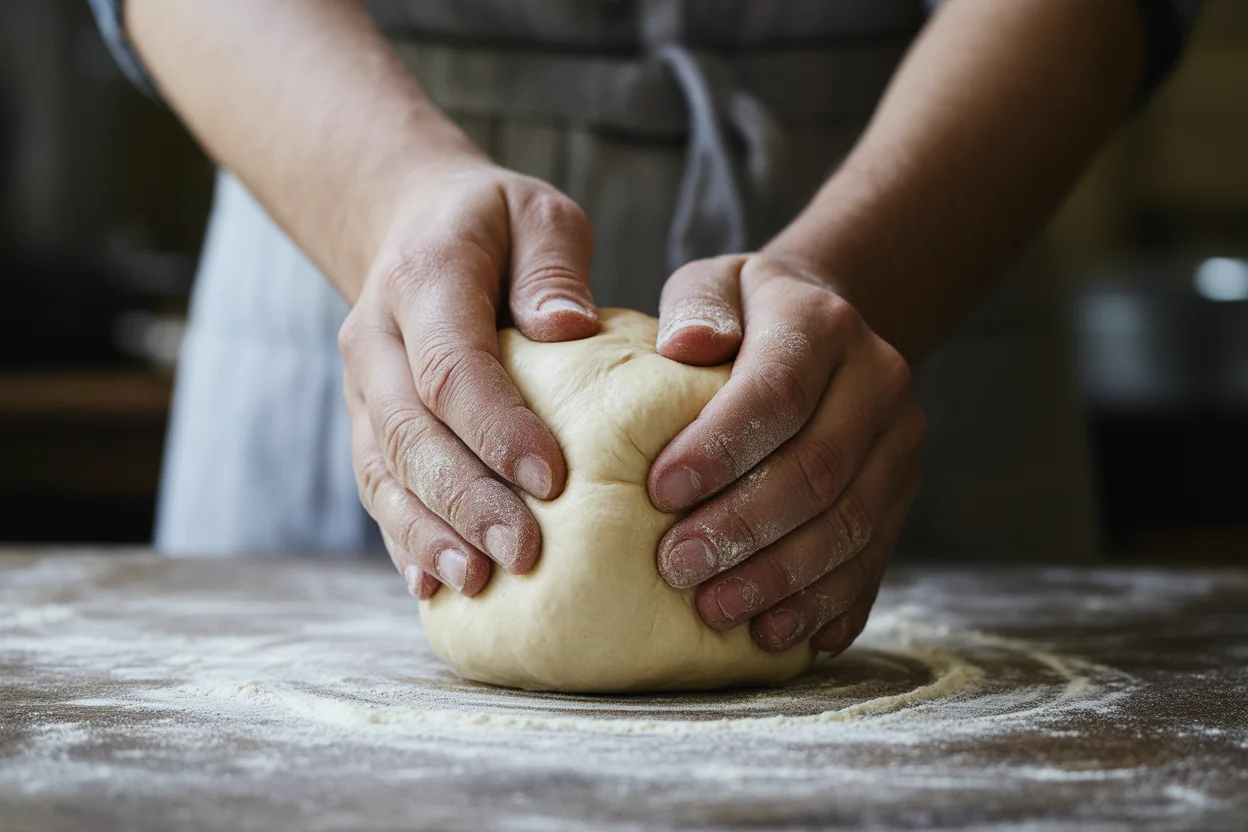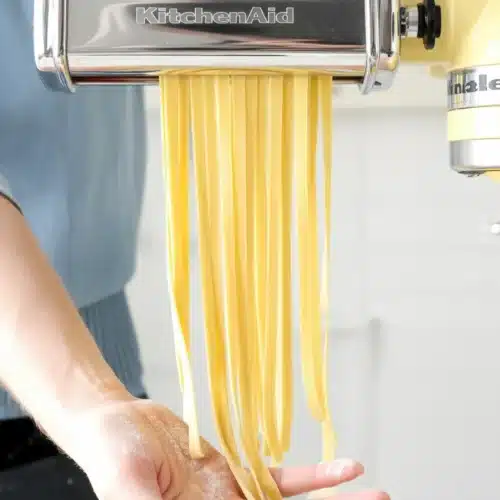- Homemade Pasta Recipe Ingredients
- How to Make Pasta
- Serving Suggestions for Homemade Pasta
- Step-by-Step Guide to Fresh Pasta
- Tips for Perfecting Homemade Pasta
- Common Questions
- So What Are You Waiting For? Try It!
Fresh pasta really makes dinner feel kinda special, doesn’t it? You get excited, your friends get excited, everyone’s happy. But here’s the thing: every time I tried making homemade pasta when I was new to it, I’d mess it up. Dried out dough, stuck-together noodles, flour all over my cat. If that’s you right now, trust me, I hear you. Ready to stop that cycle? You just need the right kitchen know-how and a few honest tricks.

Homemade Pasta Recipe Ingredients
The best thing about fresh pasta is just how simple the ingredient list is. You’re looking at flour, eggs, and a sprinkle of salt. Crazy. That’s really it! If I can make it on a student’s budget, you’re probably set, too.
You want flour that’s soft but not too sticky. Most folks reach for all-purpose, but, hey, if you have “00” flour (the fancy Italian kind), that’s even better for a smooth dough. Crack in your eggs — one egg per 100 grams of flour for classic ratios, but if you’ve got big eggs or small ones, don’t panic, just roll with it. A pinch of salt gives the dough flavor (I learned that the hard way…bland pasta is criminal). And if you struggle kneading dough, throw in a splash of olive oil to help things come together. That’s optional. I do it when I’m feeling wild or lazy, no in-between.
“I used to think making pasta at home was a whole ordeal, but after trying this super basic ingredient combo, it’s honestly a breeze. Plus, the flavor is so much better than boxed pasta. Never going back.”

How to Make Pasta
Making fresh pasta sounds like a fancy culinary challenge, but it’s surprisingly relaxing. That first time you dig into the dough, yeah, it’s a little intimidating. You start with a mountain of flour on the counter, make a dip in the center, and pour your eggs in.
Mix in the eggs slowly with a fork so nothing escapes. If it does? Well, you’re only human. Work that dough until it’s all stuck together. Once it’s shaggy-looking, knead it. Ideally, you want it smooth and elastic, but let’s be real – some days it’ll be a little lumpy. Cover and let it rest. At least thirty minutes, please. This is absolutely not the time to skip and rush.
Once rested, it’s rolling time. Dust the counter with flour, then flatten the dough. Use a rolling pin or pasta machine. If you don’t own either, use a heavy wine bottle. That’s what my aunt did, no joke. Roll it thin enough to read through (almost – don’t be a perfectionist). Cut it into ribbons, shapes, whatever you want. I do fettuccine if I’m feeling traditional, or random wiggly shapes if the kids are “helping.”
Cook in boiling, salted water till it floats. Blink and it’s done. Don’t wander away.
Serving Suggestions for Homemade Pasta
Okay, this is where you make your fresh pasta sing. Seriously, don’t just dump jarred sauce on that masterpiece. You can totally keep it simple and still look like a five-star restaurant chef. Here’s my go-to rotation:
- Toss with some butter, a sprinkle of parmesan, and cracked black pepper. Simple and honest!
- Add roasted cherry tomatoes, basil, and a drizzle of good olive oil. Tastes like an Italian summer.
- Sauté garlic in olive oil, then toss hot noodles straight in. Parm optional, but when is it not better with cheese?
- Feeling fancy? Make cacio e pepe. Just cheese and pepper, but wow—total crowd pleaser.
Basically, anything fresh and quick works. And if you wanna eat it with just olive oil and a little salt, I will not judge.
| Tip Description | |
| Humidity Control | Use a damp towel to cover the dough when it’s resting to prevent it from drying out. |
| Rest Time | Don’t rush the resting period; it enhances the dough’s elasticity. |
| Flour Application | Dust your working surface lightly to avoid overly tough pasta. |
| Taste As You Go | Try one noodle cooked before serving to ensure it’s seasoned to your liking. |
| Embrace Imperfection | Don’t worry about getting every noodle perfectly shaped; the taste is what counts! |
Step-by-Step Guide to Fresh Pasta
Let’s break this down. No complicated chef jargon, I promise. Ready?
Start with making your dough mound, plop the eggs in the center, and slowly pull in the flour with a fork. It can look like mud at first. Stay with it. Knead until it gets shiny and happy-looking. Let the dough take a nap for at least half an hour (I sometimes let it go longer if I get distracted).
When it’s rested, flatten a piece at a time and run it through your pasta roller, or old-school it with a rolling pin and elbow grease. I totally failed my first attempt – broke the rolling pin, actually. Keep flour handy, so nothing sticks. Slice into your favorite shapes.
To cook, toss the pasta in salted boiling water. It only needs two or three minutes max. Don’t make calls or start a new Netflix show, or you’ll overshoot your golden noodle moment. Fresh pasta waits for no one.
Tips for Perfecting Homemade Pasta
Alright, here’s the part where the little details make all the difference. I had to learn half of these the messy way:
Humidity matters. If it’s dry in your kitchen, use a damp towel to cover the dough so it doesn’t harden up while you roll. Don’t rush the resting time. I know, I said it already, but there’s magic in the pause. Flour is your friend, but not your best friend. Too much makes stuff tough. Dust lightly, don’t dump. Taste as you go. I do it all the time. One noodle, cooked, before committing the whole bunch. If it’s your first time, don’t aim for perfection. Some jagged noodles? Who cares. They taste great. Mess is part of the process. There’s flour everywhere at my place by the end. My dog loves pasta days.
Common Questions
Is making fresh pasta really worth it?
Oh, absolutely. The texture and taste just knock boxed pasta out. You’ll feel like you’re somewhere in Rome. For real.
Can you freeze fresh pasta?
Yep! Just flour the strands, pile them into little nests, and freeze on a tray. Bag them up once they’re solid.
Why is my dough too dry or too sticky?
Weather is wild. If it’s dry, splash in a little water. If it’s sticky, flour those hands and work surface. Trial and error is normal.
Which flour is best for homemade pasta?
I usually use all-purpose, but “00” flour absolutely gives you restaurant-style pasta. Both totally work.
How thin should I roll the dough?
If you can almost see your hand through it, you’re set. But honestly, a little too thick still tastes great.
So What Are You Waiting For? Try It!
Making fresh pasta at home is kinda magic. It’s easier than you think, it uses things you probably already have, and the flavor will have you swearing off boxed noodles for good. (I’ll never forget my first successful batch. I felt like a rockstar.) Dip your toe in, get a bit messy, and enjoy every bite. If you want more ideas on homemade recipes, check out the Pasta Grannies YouTube channel for pure pasta inspiration. You’ve got this.

5 Easy Tips for Perfect Fresh Pasta Every Time
Equipment
- Rolling Pin or Pasta Machine
- Large Pot
- Mixing Bowl
Ingredients
- 200 g flour all-purpose or ’00’ flour
- 2 eggs room temperature
- 1 pinch salt
- 1 tsp olive oil optional
Instructions
- Form a mound of flour on a clean surface and make a well in the center. Crack in the eggs and add salt.
- Using a fork, slowly mix the eggs, gradually incorporating flour until a shaggy dough forms.
- Knead the dough for 8–10 minutes until smooth and elastic. Add olive oil if needed. Cover and let rest for at least 30 minutes.
- Divide the dough and roll it out using a rolling pin, pasta machine, or even a wine bottle. Roll thinly, dusting with flour as needed.
- Cut into desired shapes (fettuccine, tagliatelle, etc.).
- Cook pasta in salted boiling water for 2–3 minutes until it floats. Drain and serve with your favorite sauce.

